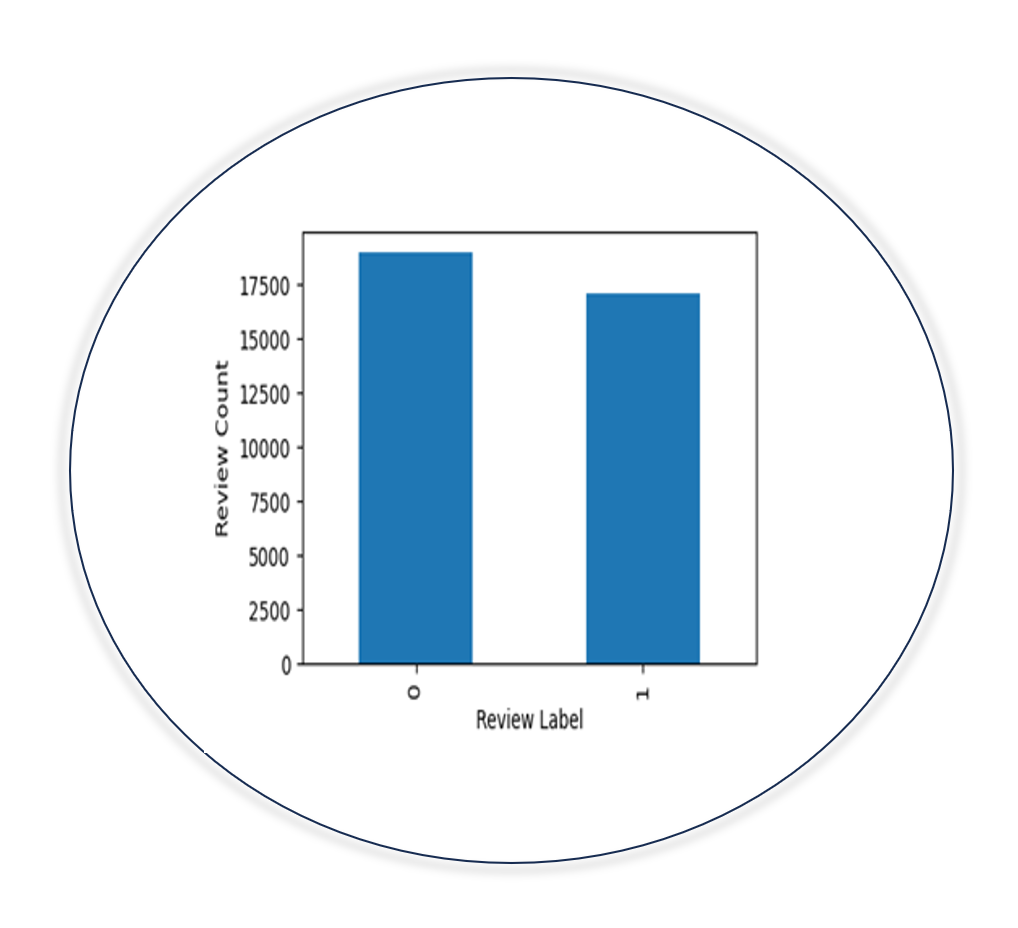Evaluating The Impact of Feature Extraction Techniques on Arabic Reviews Classification
DOI:
https://doi.org/10.51173/ijds.v1i1.10Keywords:
Texts Classification, Stemming, Feature Extraction, Deep LearningAbstract
With the advent of AI text-based tools and applications, the need to introduce and investigate word-processing tools has also been raised. NLP tools and techniques have developed rapidly for some languages, such as English. However, other languages, such as Arabic, still need to introduce more methods and techniques to provide more explanations. In this study, we present a sample to classify customer reviews which are written in Arabic. The data set (HARD) is used to be certified as a dataset for work. This study adopted four classifications in machine learning and deep learning (CNN, RNN, NB, LR). In addition, the texts were cleaned using data cleaning techniques, and the stemming technique was used, and three types of them were implemented (Khoja Stemmer, Snowball Stemmer, Thashaphyne Stemmer). Moreover, two methods of feature extraction were used (TF-IDF, N-gram). The results of the model provided several explanations. The best performance resulted from the use of (CNN+ Snowball Stemmer +N-gram) with accuracy (%93.5). The results of the model stated that some workbooks are sensitive to the use of different tools, and some accuracy performance can also be affected if there are different methods for extracting the features used. Either feature extraction has an impact on accuracy performance. The model also proved that colloquial Arabic could cause some limitations because different dialects can give different meanings across different regions or countries. The results of the study open the door to exploring other tools and methods to enrich natural Arabic language processing and contribute to the development of new applications that support Arabic content.
Downloads
References
M. M. Almanea, “Automatic Methods and Neural Networks in Arabic Texts Diacritization: A Comprehensive Survey,” IEEE Access, vol. 9, no. Dl, pp. 145012–145032, 2021, doi: 10.1109/ACCESS.2021.3122977.
F. Habibi and M. A. Zabardast, “Digitalization, education and economic growth: A comparative analysis of Middle East and OECD countries,” Technol Soc, vol. 63, 2020, doi: 10.1016/j.techsoc.2020.101370.
M. B. Ressan and R. F. Hassan, “Naïve-Bayes family for sentiment analysis during COVID-19 pandemic and classification tweets,” Indonesian Journal of Electrical Engineering and Computer Science, vol. 28, no. 1, 2022, doi: 10.11591/ijeecs.v28.i1.pp375-383.
R. A. Bagate and R. Suguna, “Sarcasm detection of tweets without #sarcasm: Data science approach,” Indonesian Journal of Electrical Engineering and Computer Science, vol. 23, no. 2, 2021, doi: 10.11591/ijeecs.v23.i2.pp993-1001.
M. O. Hegazi, Y. Al-Dossari, A. Al-Yahy, A. Al-Sumari, and A. Hilal, “Preprocessing Arabic text on social media,” Heliyon, vol. 7, no. 2, 2021.
R. Obiedat, D. Al-Darras, E. Alzaghoul, and O. Harfoushi, “Arabic aspect-based sentiment analysis: A systematic literature review,” IEEE Access, vol. 9, pp. 152628–152645, 2021.
H. Elfaik and E. H. Nfaoui, “Deep Bidirectional LSTM Network Learning-Based Sentiment Analysis for Arabic Text,” Journal of Intelligent Systems, vol. 30, no. 1, pp. 395–412, 2021, doi: 10.1515/jisys-2020-0021.
M. F. Ibrahim and A. Al-Taei, “Based Document Classification for Arabic Theses and Dissertations,” in Advances in Data and Information Sciences: Proceedings of ICDIS 2021, Springer, 2022, pp. 189–203.
I. Guellil, H. Saâdane, F. Azouaou, B. Gueni, and D. Nouvel, “Arabic natural language processing: An overview,” Journal of King Saud University-Computer and Information Sciences, vol. 33, no. 5, pp. 497–507, 2021.
M. O. Hegazi, Y. Al-Dossari, A. Al-Yahy, A. Al-Sumari, and A. Hilal, “Preprocessing Arabic text on social media,” Heliyon, vol. 7, no. 2, p. e06191, 2021, doi: 10.1016/j.heliyon.2021.e06191.
D. H. Abd, A. T. Sadiq, and A. R. Abbas, “Classifying political arabic articles using support vector machine with different feature extraction,” in International Conference on Applied Computing to Support Industry: Innovation and Technology, Springer, 2019, pp. 79–94.
M. F. Ibrahim, M. A. Alhakeem, and N. A. Fadhil, “Evaluation of Naïve Bayes Classification in Arabic Short Text Classification,” Al-Mustansiriyah Journal of Science, vol. 32, no. 4, pp. 42–50, 2021, doi: 10.23851/mjs.v32i4.994.
D. H. Abd, W. Khan, B. Khan, N. Alharbe, D. Al-Jumeily, and A. Hussain, “Categorization of Arabic posts using Artificial Neural Network and hash features,” J King Saud Univ Sci, vol. 35, no. 6, p. 102733, 2023, doi: 10.1016/j.jksus.2023.102733.
A. Karimi, L. Rossi, and A. Prati, “AEDA: An Easier Data Augmentation Technique for Text Classification,” Findings of the Association for Computational Linguistics, Findings of ACL: EMNLP 2021, pp. 2748–2754, 2021, doi: 10.18653/v1/2021.findings-emnlp.234.
A. M. Bdeir and F. Ibrahim, “A framework for arabic tweets multi-label classification using word embedding and neural networks algorithms,” in Proceedings of the 2020 2nd International Conference on Big Data Engineering, 2020, pp. 105–112.
S. K. Prabhakar, “Models with Multihead Attention,” vol. 2021, 2021.
D. H. Abd, A. T. Sadiq, and A. R. Abbas, “Political articles categorization based on different naïve bayes models,” in International Conference on Applied Computing to Support Industry: Innovation and Technology, Springer, 2019, pp. 286–301.
A. Elnagar, Y. S. Khalifa, and A. Einea, “Hotel Arabic-reviews dataset construction for sentiment analysis applications,” Intelligent natural language processing: Trends and applications, pp. 35–52, 2018.
H. El Rifai, L. Al Qadi, and A. Elnagar, “Arabic text classification: the need for multi-labeling systems,” Neural Comput Appl, vol. 34, no. 2, 2022, doi: 10.1007/s00521-021-06390-z.
Y. S. and E. A. Elnagar Ashraf and Khalifa, “Hotel Arabic-Reviews Dataset Construction for Sentiment Analysis Applications,” in Intelligent Natural Language Processing: Trends and Applications, A. E. and T. F. Shaalan Khaled and Hassanien, Ed., Cham: Springer International Publishing, 2018, pp. 35–52. doi: 10.1007/978-3-319-67056-0_3.
Hawraa Fadhil Khelil, Mohammed Fadhil Ibrahim, Hafsa Ataallah Hussein, and Raed Kamil Naser, “Evaluation of Different Stemming Techniques on Arabic Customer Reviews,” Journal of Techniques, vol. 6, no. 1, pp. 103–111, Feb. 2024, doi: 10.51173/jt.v6i1.2313.
S. Alyami, A. Alhothali, and A. Jamal, “Systematic literature review of Arabic aspect-based sentiment analysis,” Journal of King Saud University-Computer and Information Sciences, vol. 34, no. 9, pp. 6524–6551, 2022.
N. Boudad, R. Faizi, R. Oulad Haj Thami, and R. Chiheb, “Sentiment analysis in Arabic: A review of the literature,” Ain Shams Engineering Journal, vol. 9, no. 4, pp. 2479–2490, 2018, doi: https://doi.org/10.1016/j.asej.2017.04.007.
H. J. Aleqabie, M. S. Sfoq, R. A. Albeer, and E. H. Abd, “A Review Of Text Mining Techniques: Trends, and Applications In Various Domains,” Iraqi Journal for Computer Science and Mathematics, vol. 5, no. 1. 2024. doi: 10.52866/ijcsm.2024.05.01.009.
A. Oussous, A. A. Lahcen, and S. Belfkih, “Impact of Text Pre-processing and Ensemble Learning on Arabic Sentiment Analysis,” Proceedings of the 2nd International Conference on Networking, Information Systems & Security, 2019.
B. Jurish and K.-M. Würzner, “Word and Sentence Tokenization with Hidden Markov Models,” Journal for Language Technology and Computational Linguistics, vol. 28, no. 2, pp. 61–83, 2013, doi: 10.21248/jlcl.28.2013.176.
Z. A. Abutiheen, A. H. Aliwy, and K. B. S. Aljanabi, “Arabic text classification using master-slaves technique,” J Phys Conf Ser, vol. 1032, no. 1, 2018, doi: 10.1088/1742-6596/1032/1/012052.
A. Alajmi, E. M. Saad, and R. R. Darwish, “Toward an ARABIC stop-words list generation,” Int J Comput Appl, vol. 46, no. 8, pp. 8–13, 2012.
I. A. El-Khair, “Effects of Stop Words Elimination for Arabic Information Retrieval: A Comparative Study,” pp. 1–15, 2017.
T. Kanan, O. Sadaqa, A. Almhirat, and E. Kanan, “Arabic light stemming: A comparative study between p-stemmer, khoja stemmer, and light10 stemmer,” in 2019 Sixth International Conference on Social Networks Analysis, Management and Security (SNAMS), IEEE, 2019, pp. 511–515.
M. Alhawarat, H. Abdeljaber, and A. Hilal, “Effect of Stemming on Text Similarity for Arabic Language at Sentence Level,” PeerJ Comput Sci, vol. 7, May 2021, doi: 10.7717/peerj-cs.530.
S. Bahassine, A. Madani, and M. Kissi, “Arabic text classification using new stemmer for feature selection and decision trees,” Journal of Engineering Science and Technology, vol. 12, no. 6, pp. 1475–1487, 2017.
H. A. Almuzaini and A. M. Azmi, “Impact of Stemming and Word Embedding on Deep Learning-Based Arabic Text Categorization,” IEEE Access, vol. 8, pp. 127913–127928, 2020, doi: 10.1109/ACCESS.2020.3009217.
F. E. Zamani, K. Umam, W. D. I. Azis, and W. S. Abdillah, “Analysis and implementation of computer-based system development of stemming algorithm for finding Arabic root word,” J Phys Conf Ser, vol. 1402, no. 6, 2019, doi: 10.1088/1742-6596/1402/6/066030.
A. M. Alayba, V. Palade, M. England, and R. Iqbal, “Improving Sentiment Analysis in Arabic Using Word Representation,” 2nd IEEE International Workshop on Arabic and Derived Script Analysis and Recognition, ASAR 2018, pp. 13–18, 2018, doi: 10.1109/ASAR.2018.8480191.
X. Li, Z. Li, H. Qiu, G. Hou, and P. Fan, “An overview of hyperspectral image feature extraction, classification methods and the methods based on small samples,” Applied Spectroscopy Reviews, vol. 58, no. 6. 2023. doi: 10.1080/05704928.2021.1999252.
D. P. Tian, “A review on image feature extraction and representation techniques,” International Journal of Multimedia and Ubiquitous Engineering, vol. 8, no. 4. 2013.
S. Khalid, T. Khalil, and S. Nasreen, “A survey of feature selection and feature extraction techniques in machine learning,” in Proceedings of 2014 Science and Information Conference, SAI 2014, 2014. doi: 10.1109/SAI.2014.6918213.
M. Avinash and E. Sivasankar, “A study of feature extraction techniques for sentiment analysis,” in Advances in Intelligent Systems and Computing, 2019. doi: 10.1007/978-981-13-1501-5_41.
X. Chen, Y. Xue, H. Zhao, X. Lu, X. Hu, and Z. Ma, “A novel feature extraction methodology for sentiment analysis of product reviews,” Neural Comput Appl, vol. 31, pp. 6625–6642, 2019.
R. Ahuja, A. Chug, S. Kohli, S. Gupta, and P. Ahuja, “The impact of features extraction on the sentiment analysis,” Procedia Comput Sci, vol. 152, pp. 341–348, 2019.
J. Mutinda, W. Mwangi, and G. Okeyo, “Lexicon‐pointed hybrid N‐gram Features Extraction Model (LeNFEM) for sentence level sentiment analysis,” Engineering Reports, vol. 3, no. 8, p. e12374, 2021.
J. Mutinda, W. Mwangi, and G. Okeyo, “Lexicon-pointed hybrid N-gram Features Extraction Model (LeNFEM) for sentence level sentiment analysis,” Engineering Reports, vol. 3, no. 8, 2021, doi: 10.1002/eng2.12374.
T. Kanan and E. A. Fox, “Automated arabic text classification with P‐S temmer, machine learning, and a tailored news article taxonomy,” J Assoc Inf Sci Technol, vol. 67, no. 11, pp. 2667–2683, 2016.
W. Alabbas, H. M. Al-Khateeb, and A. Mansour, “Arabic text classification methods: Systematic literature review of primary studies,” Colloquium in Information Science and Technology, CIST, vol. 0, no. x, pp. 361–367, 2016, doi: 10.1109/CIST.2016.7805072.
S. Bodapati, H. Bandarupally, R. N. Shaw, and A. Ghosh, “Comparison and analysis of RNN-LSTMs and CNNs for social reviews classification,” Advances in Applications of Data-Driven Computing, pp. 49–59, 2021.
D. Alsaleh and S. Larabi-Marie-Sainte, “Arabic Text Classification Using Convolutional Neural Network and Genetic Algorithms,” IEEE Access, vol. 9, pp. 91670–91685, 2021, doi: 10.1109/ACCESS.2021.3091376.
M. Ahmed, P. Chakraborty, and T. Choudhury, “Bangla document categorization using deep RNN model with attention mechanism,” in Cyber Intelligence and Information Retrieval: Proceedings of CIIR 2021, Springer, 2022, pp. 137–147.
J. Du, C.-M. Vong, and C. L. P. Chen, “Novel efficient RNN and LSTM-like architectures: Recurrent and gated broad learning systems and their applications for text classification,” IEEE Trans Cybern, vol. 51, no. 3, pp. 1586–1597, 2020.
C. Zong, R. Xia, and J. Zhang, “Text Classification,” in Text Data Mining, Springer, 2021, pp. 93–124.
J. Ababneh, “Application of Naïve Bayes, Decision Tree, and K-Nearest Neighbors for Automated Text Classification,” Mod Appl Sci, vol. 13, no. 11, p. 31, 2019, doi: 10.5539/mas.v13n11p31.
H. El Rifai, L. Al Qadi, and A. Elnagar, Arabic Multi-label Text Classification of News Articles, vol. 1339, no. March. Springer International Publishing, 2021. doi: 10.1007/978-3-030-69717-4_41.
A. Yousaf et al., “Emotion recognition by textual tweets classification using voting classifier (LR-SGD),” IEEE Access, vol. 9, pp. 6286–6295, 2020.















